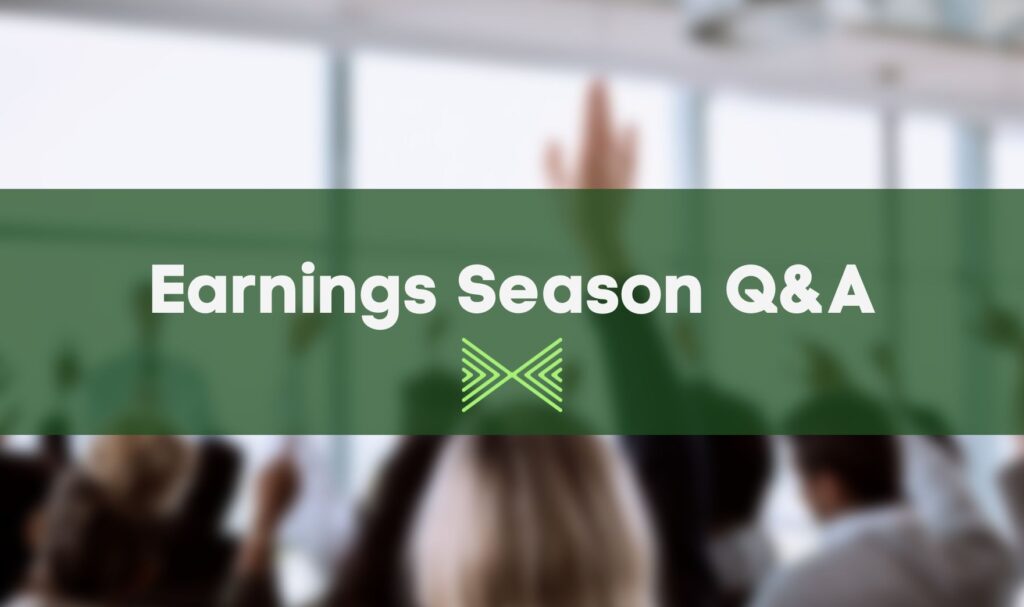Last week, I put out a “call for questions” to our entire Derby City Daily readership to find out what YOU need to know to take full advantage of this earnings season.
Whether the answer could mean the difference between sitting on the sidelines and making life-changing trades over the next few weeks, or simply give you that peace of mind you need to enter a trade with confidence, I’m here to give you that.
I was thrilled to see how many messages we received – thank you for answering the call.
If you read about the “Trifecta Bet” that became part of our investing origin story, you know I’ve had an obsession with statistics, probabilities, forecasting, and handicapping ever since I was a boy placing bets on my Grandpa Rock’s racehorse.
It’s a knack that’s proven useful with trading as well as horse racing.
And I was thrilled that so many of you were interested in that angle of earnings season trading.
Today, you’ll find out:
- Which trading strategies carry the lowest risk…
- Which carry the highest win rates…
- How to manage an options bet that goes against you…
- How to avoid options trades altogether…
- How to size your positions…
- And my very best tip for earnings season newbies.
Let’s dive right in…
Question No. 1: What is the lowest-risk type of earnings season trade? Do certain strategies come with a higher probability of winning? – Linda
A: Our “High Probability Bullish” and “High Probability Bearish” trades have the highest win percentage by far—usually around 75-85% each season. However, they require the largest risk-to-reward ratio, meaning you’re risking more to win less.
💡 A “High Probability Bullish Spread” is a great strategy when you’re “slightly bullish” and want to make money… even if you’re wrong a little bit. It’s a setup we like to use when options prices are too high relative to what this stock has done in the past. It has a high win percentage but risks more than the maximum gain. A “High Probability Bearish” trade is the same as the bullish version except used when we’re bearish on the company heading into an earnings event.
Question No. 2: I joined Earnings Season Pass after watching your recent “40-Day Get Paid Now” Summit and I’m excited to get started. My question is: How do you deal when an options trade goes against you? – Michael
A: What you’re describing does happen in options trading: But “Coin Flip” trades that would typically hit at around 50% if we had no edge end up hitting around 55%, which is a fantastic edge thanks to LikeFolio’s predictive consumer insights. Of course, you still need to use proper risk management for that other 45% – and the best way to do that is to know going in exactly what your maximum loss is on each trade (and plan accordingly). Using 1% or less of your trading account buying power on each trade is a good start.
💡 A “Coin Flip” trade is a super simple options spread: You can play it bullish to make money if the stock goes up and lose money if it goes down, or the other way around if you’re playing it bearish.
Want to join Michael in becoming an Earnings Season Pass member before trades kick off on Monday? Go here now.
Question No. 3: I live in Canada and my broker and I don’t trade in options. Are there other ways to trade earnings announcements that don’t involve options? – H
A: Yes. You can buy a stock when we’re bullish and short the stock when we’re bearish. Since this is a more buying-power-heavy method, you may want to consider changing from “getting in on Monday and out on Friday” to getting in the afternoon before the report, and exiting the morning after the report.
💡 To learn more about this kind of trade, definitely take a minute to watch our video tutorial here.
Question No. 4: Can you provide guidance on position size in total dollars invested per trade or a percentage of total account? – Ted
A: Generally, you want to stay at or under 1% of your trading account per trade. What we mean by that is to make the max loss equal to 1% or less of your total account size for your trading account. There’s no one size fits all approach here but hopefully this rule of thumb helps, Ted.
💡 Before entering any trade or investment, you should focus on your personal financial situation, risk tolerance, and what you hope to accomplish through any particular trade or investment. Having all of that can help you avoid putting yourself in an uncomfortable position.
Question No. 5: Do you have any tips/recommendations for new traders? This is my first earnings season. – Jon
A: Go slow. Paper trade or trade lightly. Start with all coin flips, then work your way into high-probability trades, then “very bearish” and/or “very bullish.”
💡 “Very bearish” is a type of vertical spread that’s used when we have a very bearish outlook on a stock and relatively cheap options; “very bullish” is a similar setup but used when we have a very bullish outlook on a stock heading into earnings.
We hope you found this Q&A session a valuable addition to Derby City Daily. Want to see these Q&As on a regular basis? Would it be helpful to have a video component in addition to a written component?
Cheers,

Landon Swan
Co-Founder
